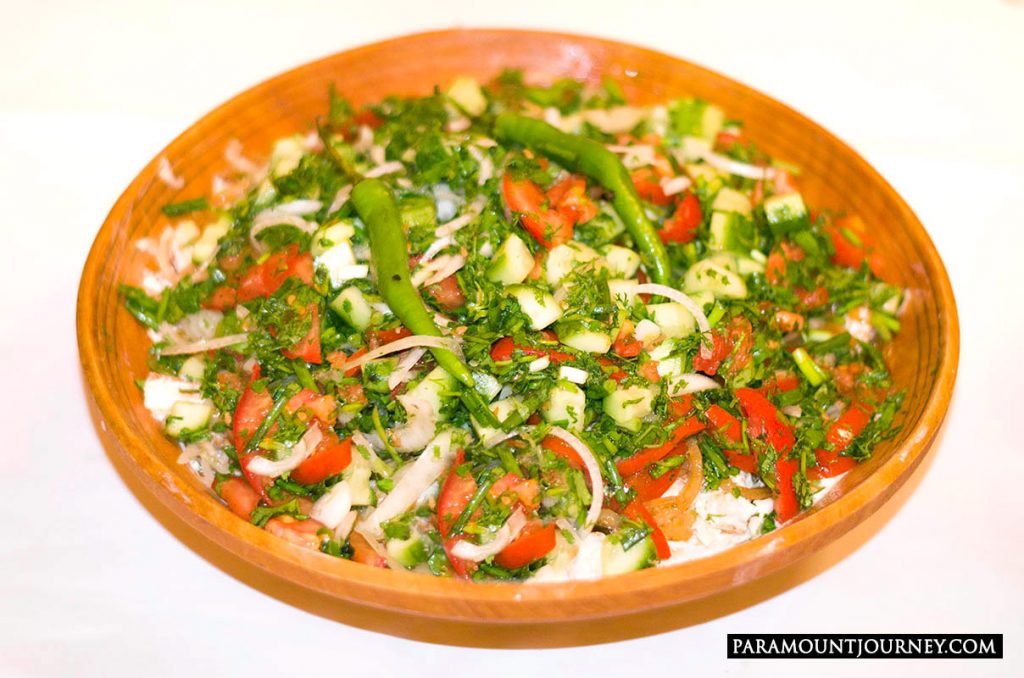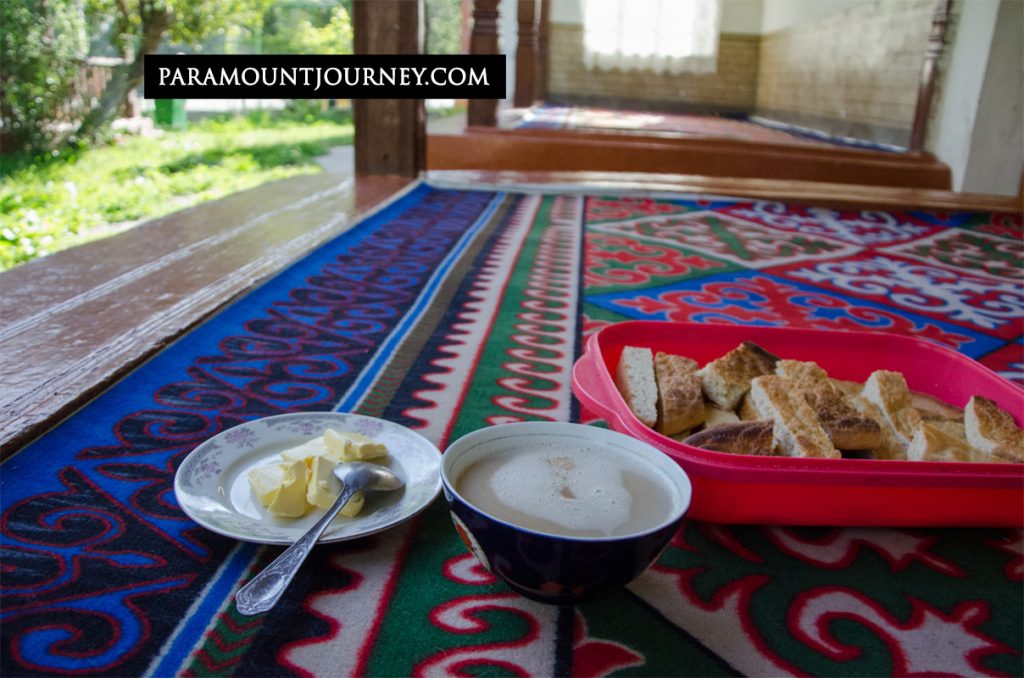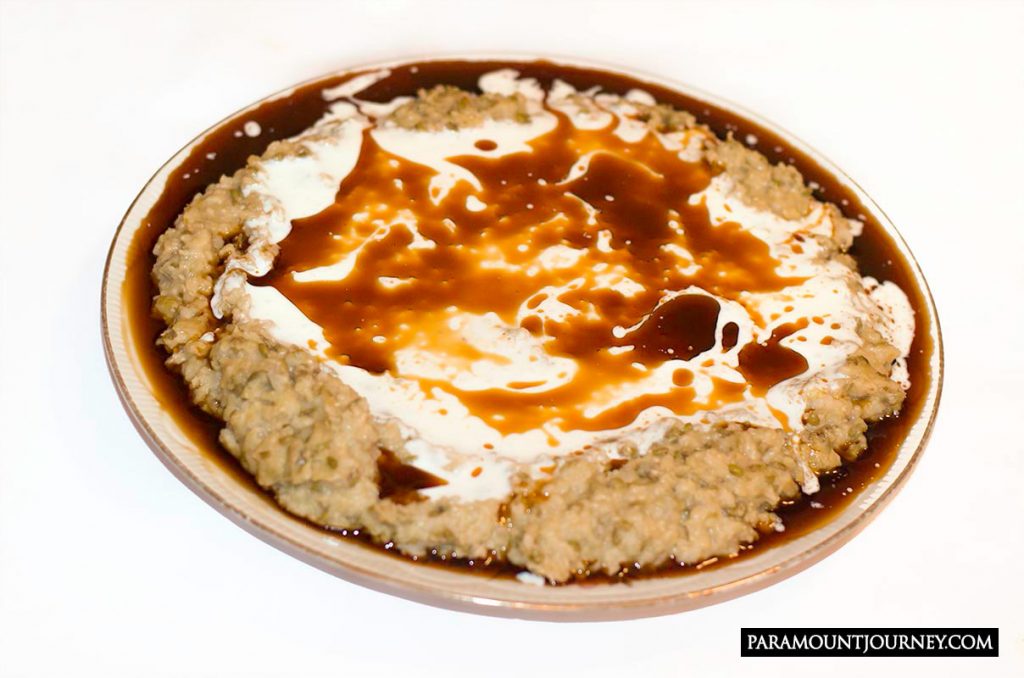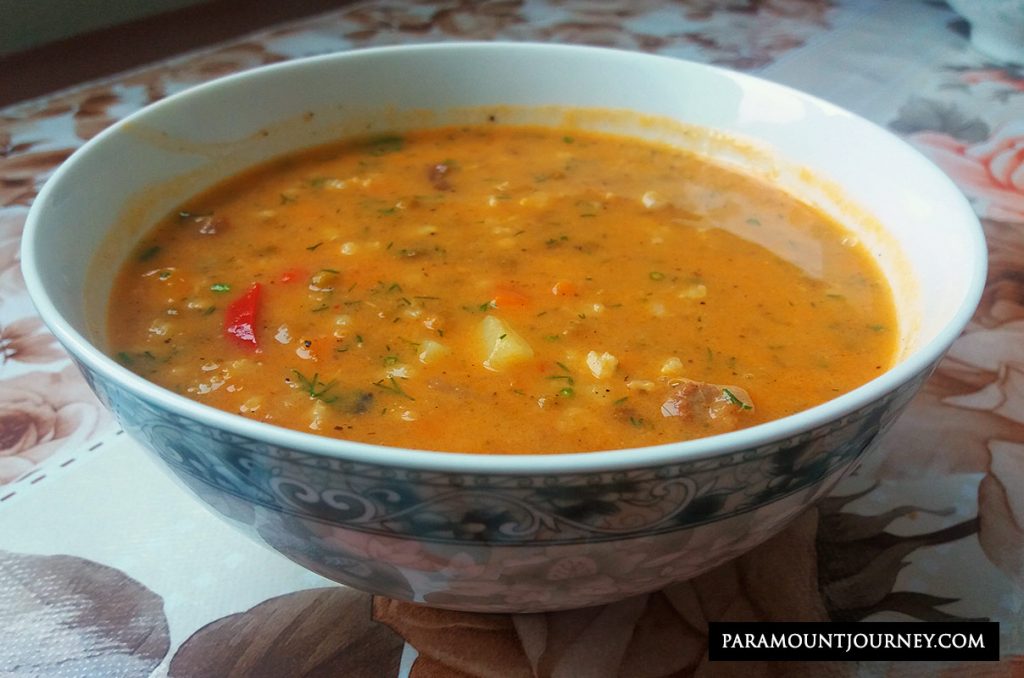Tasting the culinary specialties of Tajikistan is a highlight of any visit to the country. Not only are delicious fresh ingredients produced locally, but the location on the Silk Road meant that for centuries the cosmopolitan national cuisine has been shaped by influences from China, Russia, Persia, and the Indian Subcontinent. Here are the top eight meals which distinguish Tajik cuisine from that of other neighbouring countries:
Oshi Palov The national dish is palov, a rice-based dish akin to Iranian biriani. Eaten with your hands from a communal plate, its flavour comes from beef, dried fruits, roasted garlic, and shredded carrot. As in all Central Asian countries, palov is the favourite dish in Tajik cuisine. Although this meal is cooked in many neighbouring countries, Tajik palov has its own character. This meal is served with local variations in evert part of the country, and as an honoured guest in Tajikistan it will certainly be served to you. Isfara, Penjikent and Khujand are particularly famous for their palov.
Qurutob An equally popular meal is qurotob, made by dissolving balls of salted cheese in water and pouring the liquid over non (flat bread). It is topped with hot fried onions, a little linseed-oil or melted butter, and served with a salad of tomato, cucumber, and peppers. Qurotob is very popular in the mountainous regions, though rarely served in the Fergana Valley). Unusually for meals in Tajikistan, qurotob is suitable for vegetarians. The best qurutob is found in Kulyab.
Sambusa or somsa are Tajikistan’s samosas, an indication of ancient ties with the Indian subcontinent. Triangular parcels of pastry filled with vegetables and meat, they are deep fried and delicious, and pack easily into a picnic. Vegetarians can find sambusa stuffed with pumpkin and wild herbs gathered from the mountains. If you fancy gorging yourself on these fatty snacks, try Ambaroy’s Sambusa, located in Khujand’s Panjshanbe Bazaar.
ShirChoy is the main meal on the Pamiri dastarkhan (tablecloth) at breakfast time. This beverage consist of milk, water, tea, butter, and salt. To make a shirchoy you have to add tea to the hot water, add milk, and then boil it to reduce the liquid. Only then do you add the salt and butter. This calorific beverage helps the body to survive the harsh conditions in mountainous regions.
Oshi burida The principal ingredient of this meal, cooked mainly in the central part of the country, is the siyohalaf (mountain onion). This grass-like plant grows in the high mountains and is edible only in spring before it blossoms. This meal is eaten for its health-giving properties rather than its taste: it is rich in iodine, and when you cook it the colour changes from orange-pink to purple. It should be eaten with rice and chakka (sour yoghurt).
Kichiri is one of the oldest meals eaten in Tajikistan, and you will not find it in local cafes or restaurants. It is prepared only in family kitchens in the north of Tajikistan, where mung beans are a local staple. Kichiri is little-known nowadays, as few young people know the recipe or will make the effort to cook it. The difference between the better known shuala moshak and kichiri is that to make kichiri the mung beans and rice should be ground for an hour with a big wooden scoop. Using a blender is not as good as doing the grinding by hand. Kichiri is an excellent choice for vegetarians as it is delicious and rich in protein. The main ingredients are rice, mung beans, carrots, onions, and oil, and the sauce can be made from sour yogurt, linseed-oil, or tomato and onion.
Damlama is Tajikistan’s vegetable ragout, and it comes with lamb or beef. Although it is not a particularly unusual meal, it is a good chance to try the tasty flavours of Tajik vegetables. It is a good choice for vegetarians, and if you are hiking it is easy to cook, even at high-altitude and over a low heat. Damalama is made from with potatoes, onions, tomatoes, paprika, cabbage, vegetable oil, greens, basil, and caraway. It goes well with any type of meat.
Javari This soup is made from a type of local pulse called javari. Foreign visitors are unlikely to have tried it before. The ingredients are finely sliced onions and carrots, beef, oil, and mung beans. It is these beans which makes javari different from other soups. Most tourists enjoy this meal in a restaurant and ask the chef for the recipe.
© Paramount Journey













